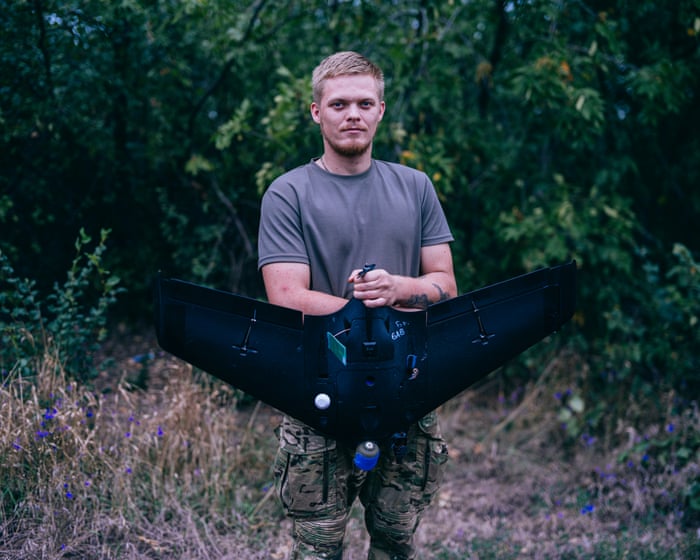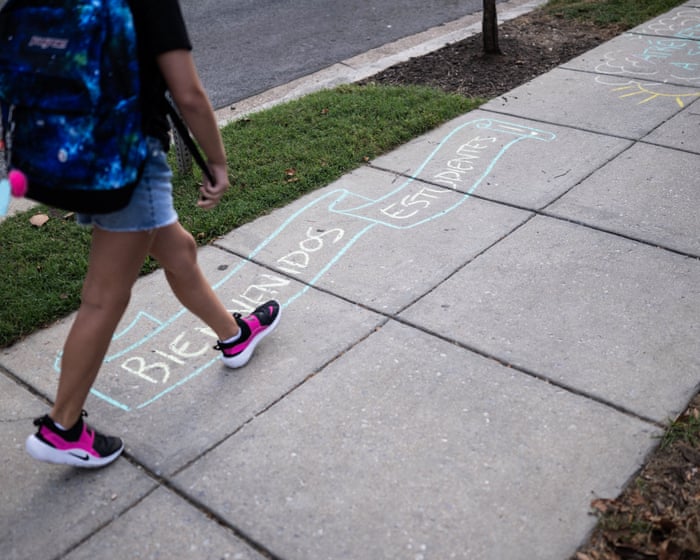“It’s more exhausting,” says Afer, deputy commander of the “Da Vinci Wolves,” describing how one of Ukraine’s most well-known battalions is defending against relentless Russian attacks. Where the enemy once relied on small armored assaults, they now try to sneak through on foot, one by one, avoiding Ukrainian frontline drones to find hiding spots.
Under whatever cover remains, survivors then gather in groups of about ten to attack Ukrainian positions. It’s costly—”in the last 24 hours we killed 11,” Afer says—but assaults that used to happen once or twice a day are now constant. To the Da Vinci commander, it seems Russian soldiers are terrified of their own officers, which is why they follow near-suicidal orders.
At the command center of the Da Vinci Wolves battalion, reconnaissance drones monitor a burned-out tree line west of Pokrovsk. The images feed into the command center, located in a 130-meter-long underground bunker. “It’s very dangerous to take even a short break from watching,” Afer says, and the team works around the clock. The bunker, built in four or five weeks, includes multiple rooms, such as a barracks for sleeping and a mess hall decorated with children’s drawings—reminders of home. The weekly menu is posted on the wall.
Three and a half years into the war, Donald Trump’s August peace initiative has made no progress, while the conflict continues to evolve. Afer explains that FPV (first-person view) drones have advanced so much that the kill zone now extends 12 to 14 kilometers behind the front lines—the range at which a $500 drone flying up to 60 mph can strike. This means, Afer adds, that “all our logistics—food, ammunition, and medical supplies—are moved either on foot or with ground drones.”
Further back, at a rural dacha used by Da Vinci soldiers, several types of ground drones are parked. The technology has moved quickly from concept to trial to reality. These include remotely controlled machine guns and flatbed robot vehicles. One model, the $12,000 Termit, has tracks for rough terrain and can carry 300kg over 12 miles at a top speed of 7 mph.
Land drones also save lives. “Last night we evacuated a wounded man with two broken legs and a chest wound,” Afer continues. The process took nearly 20 hours and involved two soldiers carrying the injured man over a mile to a land drone, which transported him to a safe village. The soldier survived.
While Da Vinci reports its position is stable, endless Russian infiltration attempts have exposed areas where the line is thinly held or poorly coordinated between units. Last month, Russian troops penetrated up to 12 miles into Ukrainian lines northeast of Pokrovsk near Dobropillya—a dangerous breach in a critical sector, just before Trump’s summit with Vladimir Putin in Alaska.
Initially, reports suggested a few dozen had broken through, but the final count appears much higher. Ukrainian military sources estimate 2,000 Russians got through, with 1,100 killed in a counterattack led by the 14th Chervona Kalyna brigade from Ukraine’s newly formed Azov Corps—a rare setback in Russia’s otherwise slow but steady advance.
That evening, at another dacha used by Da Vinci, people linger in the yard as moths circle the light bulbs. Inside, a specialist drone jammer sits on a gaming chair, surrounded by equipment.A jammer system is built from seven screens arranged in a fan shape, supported by intricate carpentry. It’s too delicate to photograph, but the team leader, Oleksandr—call sign Shoni—explains its purpose. Both sides can intercept each other’s FPV drone feeds, and three of the screens are used to capture footage that helps locate enemy drones. Once a drone is detected, the operator identifies its radio frequency and disables it using ground-based jammers—unless it’s a fibre optic drone, which uses a cable up to 12 miles long instead of a radio signal.
“We’re jamming about 70% of drones,” Shoni says, though he admits Russian forces have a similar success rate. In their area, that means taking down 30 to 35 enemy drones each day. Sometimes the number is even higher. “Last month, we closed the sky. We intercepted Russian pilots saying over the radio that they couldn’t fly,” he adds. But that changed when Russian artillery destroyed some of their jamming equipment. Shoni notes that the battle shifts back and forth: “It’s a drone war now—there’s a shield and a sword. We are the shield.”
Meanwhile, Sean, an FPV pilot with the Da Vinci unit, describes operating up to 20 missions in 24 hours. He works in a two- or three-person crew, stationed a few miles behind the front line. With Russian forces on the offensive, their main targets are enemy infantry. Sean openly admits to killing at least three Russian soldiers during his shifts in this deadly ground-air struggle. When asked if distance makes killing easier, another pilot named Dubok, sitting beside him, replies, “How would we know? That’s all we see.”
Other anti-drone systems are more advanced. Ukraine’s 3rd Brigade holds the northern Kharkiv sector east of the Oskil River, while longer-range defenses are positioned to the west. Inside a bunker, an operator monitors a radar, watching for Russian reconnaissance drones like the Supercam, Orlan, and Zala. If a target appears, two crew members rush into sunflower fields to launch an Arbalet interceptor—a small, hand-held delta-wing drone made of black polystyrene, costing around $500.
The Arbalet can reach speeds of 110 miles per hour, though its battery lasts only about 40 minutes. A pilot hidden in the bunker controls it using a sensitive hobbyist controller and the drone’s camera, aiming to get close enough to detonate the grenade it carries and destroy the enemy drone. Buhan, one of the pilots, notes that it’s actually easier to learn to fly the Arbalet if you’ve never piloted an FPV drone before.
On an unusually wet and cloudy August day, drone activity is minimal—the Russians avoid flying in such conditions. The crew holds off launching the Arbalet to avoid losing it, so there’s time to talk. Buhan shares that he was a trading manager before the war, while Daos worked in investments. “I would have had a completely different life if not for the war,” Daos reflects, “but we all need to come together and fight for freedom.”
When asked if they still feel motivated to keep fighting despite no end in sight, both men look my way and nod firmly, their resolve clear even without words.
Frequently Asked Questions
Of course Here is a list of FAQs about the dominance of drones in the Ukraine conflict designed to be clear and helpful for a wide audience
General Beginner Questions
Q What does it mean that the battlefield is dronedominated
A It means that small unmanned aerial vehicles are now a central tool for both sides They are used for finding targets directing artillery and even attacking directly making them as important as traditional infantry or tanks in many situations
Q What kinds of drones are being used
A Mainly two types
Commercial Drones Small cheap offtheshelf drones used for reconnaissance and dropping small grenades
FPV Drones These are often custombuilt racing drones that pilots fly using a video headset They are fast agile and used like guided missiles to crash into targets
Q Why are drones so effective in this war
A They provide a huge advantage seeing without being seen A single soldier with a drone can spot enemy positions and guide incredibly accurate artillery fire from miles away all while staying in relative safety
Q Arent military drones like the ones the US has
A Yes but they are less common Larger militarygrade drones are used but the real shift is the massive use of small cheap and widely available drones that any soldier can operate
Impact Strategic Questions
Q How have drones changed traditional warfare
A They have made it much harder to hide Tanks and soldiers in trenches can be spotted and targeted from the air by a 2000 drone neutralizing the advantage of expensive heavy armor It has made warfare more transparent and deadly
Q What is the main problem with relying on drones
A The main challenges are electronic warfare and jamming Both sides use systems to block the drones radio signal and GPS causing them to lose control and crash Its a constant cat and mouse game between drone pilots and jammers
Q Has this made warfare cheaper or more expensive
A Its a paradox Individual drones are very cheap compared to a tank or a missile However because




